A Timeless Testament in Alabaster
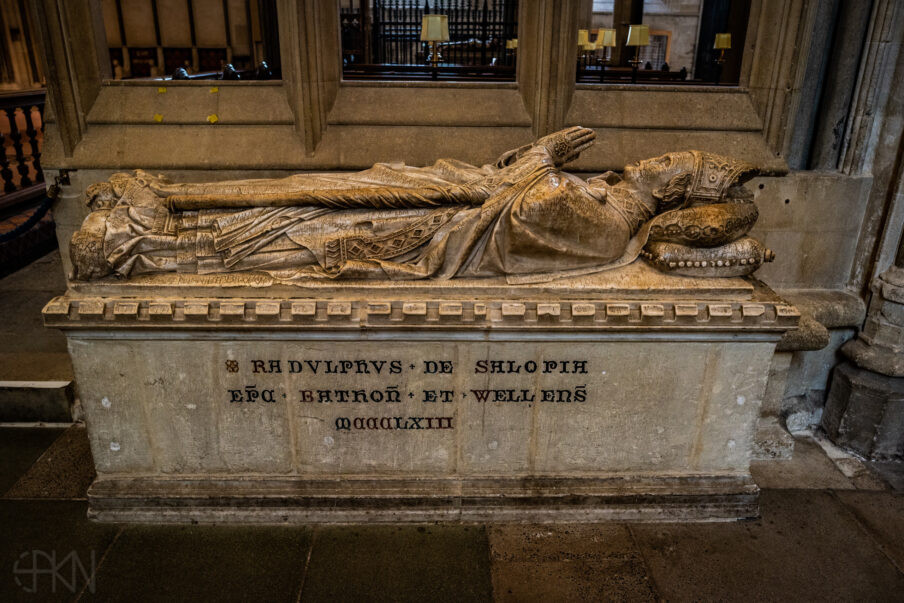
In the serene North Choir Aisle of Wells Cathedral, Somerset, lies a remarkable piece of history – the alabaster effigy of Bishop Ralph of Shrewsbury. This exquisite sculpture, one of the earliest surviving alabaster effigies of a high-ranking clergyman, stands as a silent witness to the life and legacy of a man who shaped both the physical and spiritual landscape of 14th century England.
From Obscurity to Prominence
Ralph of Shrewsbury’s journey began in relative obscurity, but his intellect and devotion soon propelled him to great heights. After serving as Chancellor of Oxford University from 1328 to 1329, he was unanimously elected Bishop of Bath and Wells – a position that would define his life’s work.
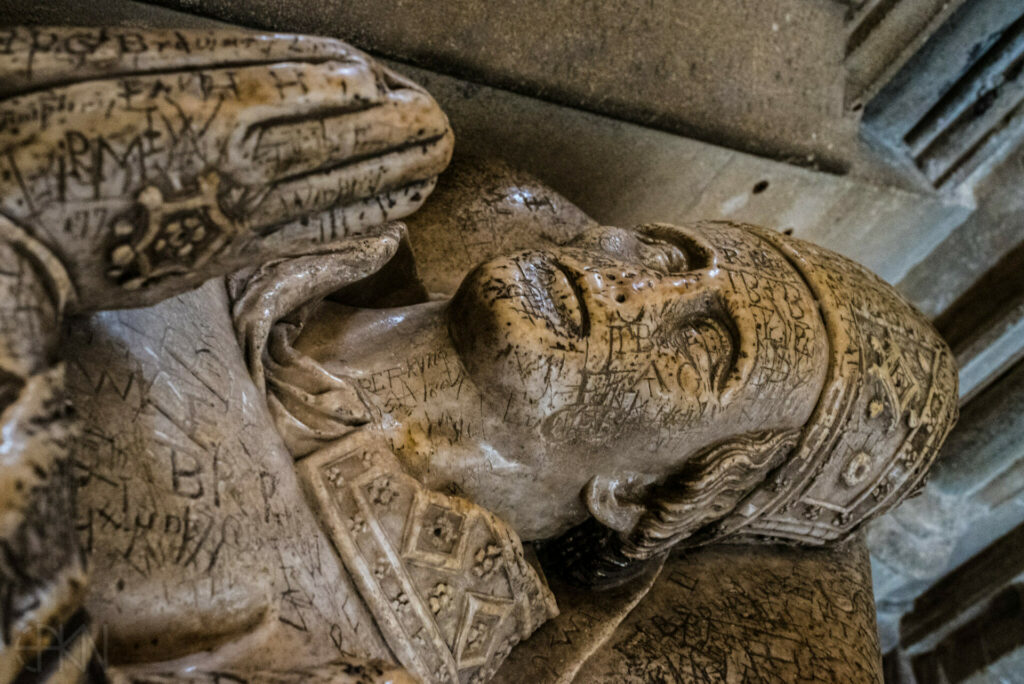
A Shepherd to His Flock
Fortifying Faith and Stone
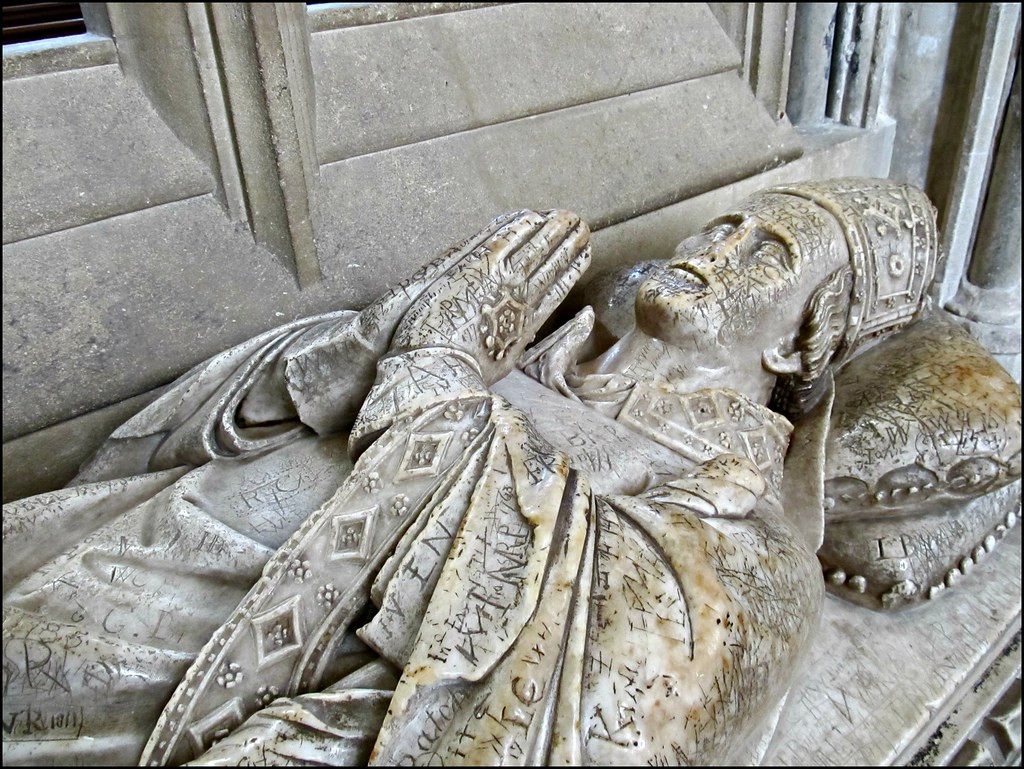
Bishop Ralph’s tenure was marked by both spiritual and physical fortifications. He restored numerous palaces associated with his see and transformed the episcopal palace at Wells into a formidable stronghold, complete with towering walls and a deep moat. His influence likely extended to the eastern limb of Wells Cathedral itself, reshaping the very heart of his spiritual domain.
A Champion of the Minor Clergy
Perhaps Bishop Ralph’s most enduring legacy lies in his compassion for the minor clergy. He founded the college of vicars, providing them with homes, a chapel, and a hall in the ‘vicars close’ – a community that stands to this day. His foresight in securing separate endowments and establishing rules of conduct for the vicars demonstrated a deep understanding of their needs and importance.
The Effigy: A Story in Stone
A Masterpiece of Medieval Craftsmanship
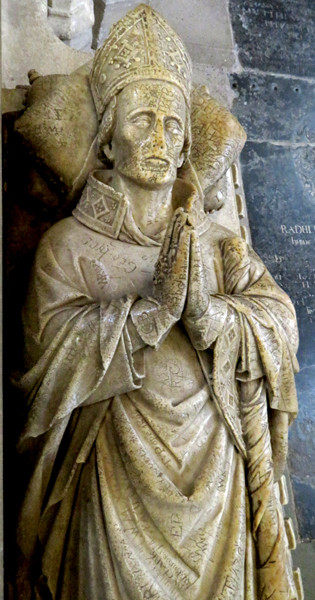
The effigy itself is a marvel of 14th century artistry. Bishop Ralph is depicted in eternal repose, his hands clasped in prayer and his head resting on ornate pillows. The intricate details, from his hinged mitre to the now-broken but once fully undercut staff, speak to the skill of the medieval craftsmen.
A Journey Through Time
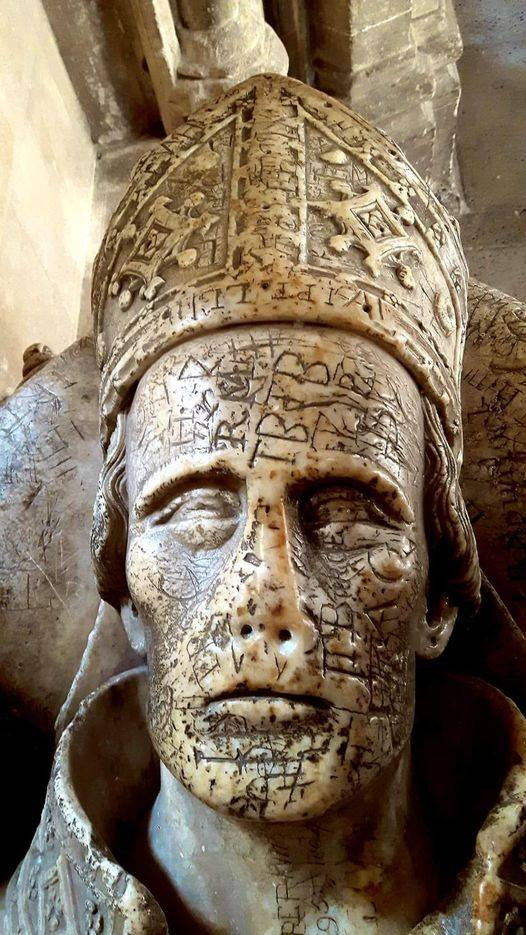
Originally placed in a position of honor before the high altar, the effigy has weathered centuries of change. Its current location, chosen around 1550, bears the marks of time – one side heavily inscribed with graffiti, the other remarkably preserved. These contrasting faces of the sculpture tell a story of reverence, neglect, and enduring significance.
A Legacy Remembered
In the halls of Wells Cathedral, a commemorative panel painting from the late 16th or early 17th century depicts the vicars kneeling at Bishop Ralph’s feet, a touching tribute to his lasting impact on their lives. This image, like the effigy itself, serves as a reminder of a man whose vision and compassion continue to resonate through the centuries.
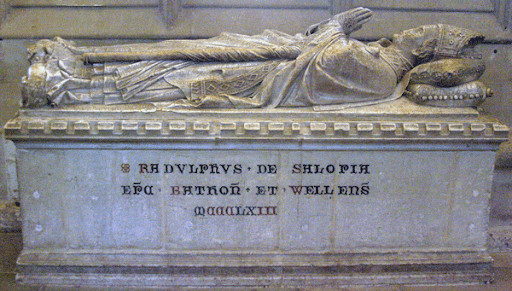
As visitors today gaze upon the alabaster form of Bishop Ralph, they witness more than just a beautifully carved stone. They see the embodiment of a life dedicated to faith, community, and the betterment of those he served – a legacy that has stood the test of time, much like the enduring walls of Wells Cathedral itself.
